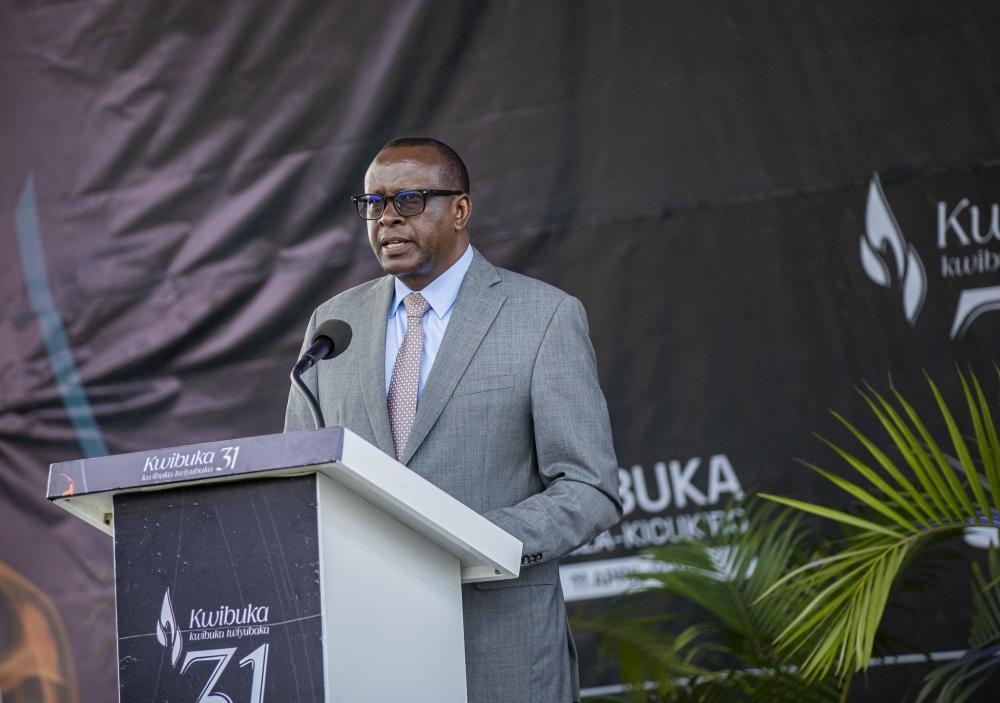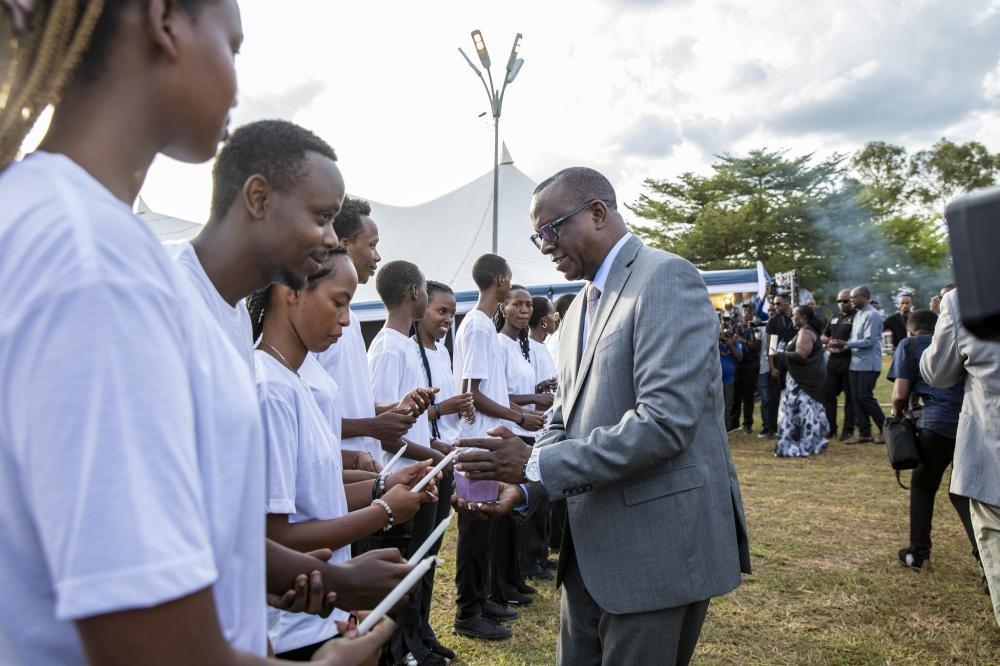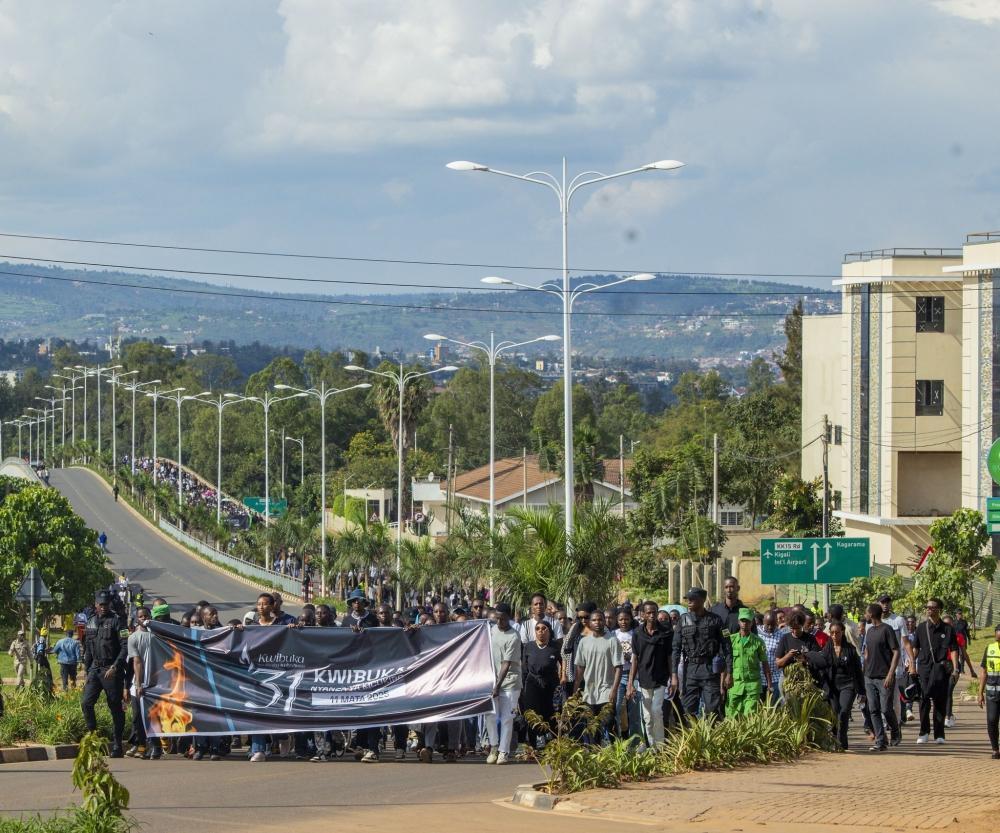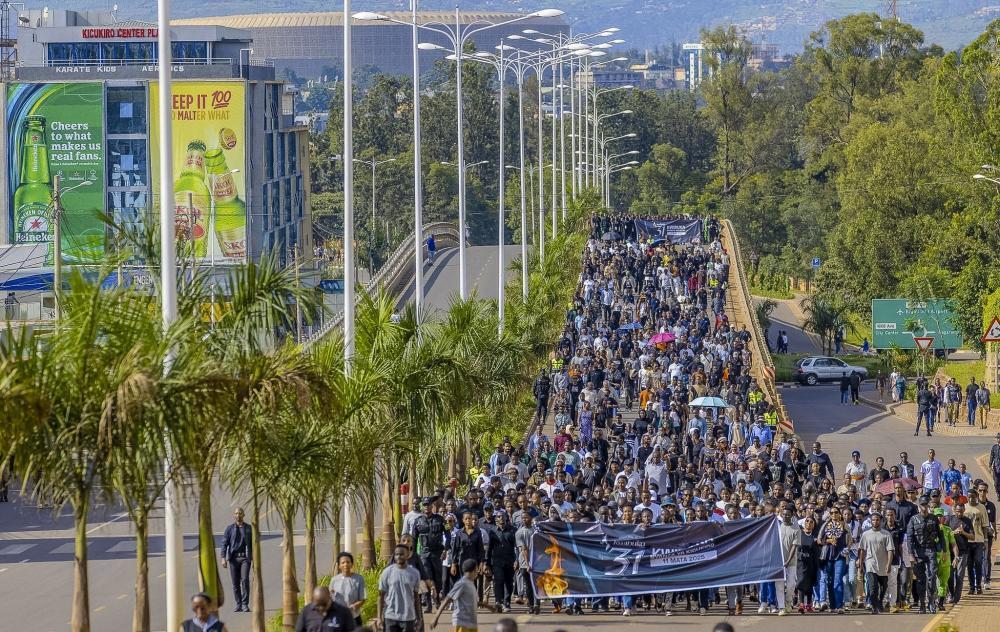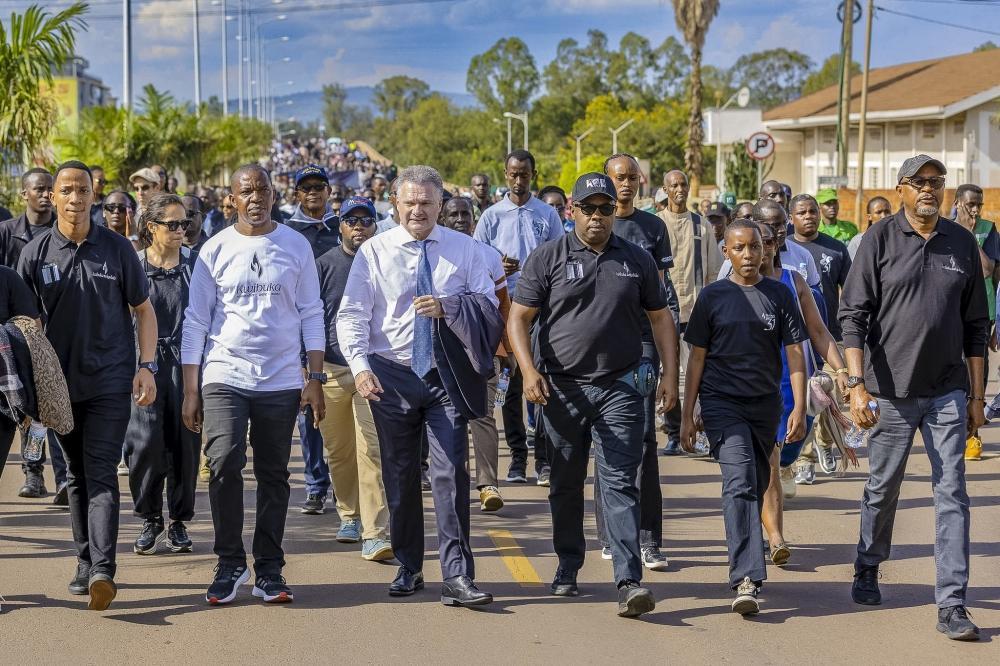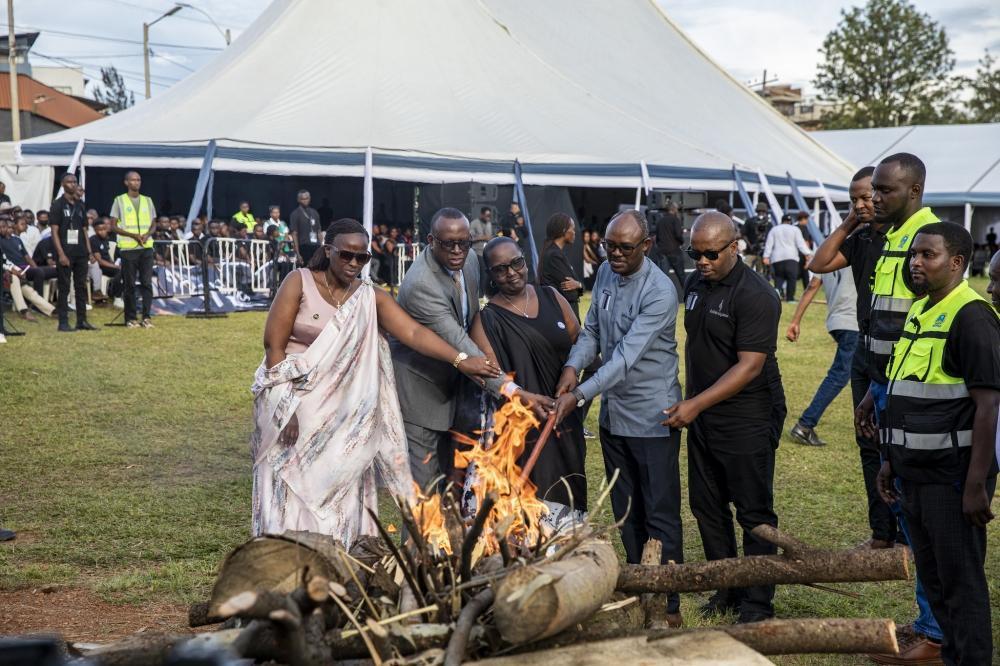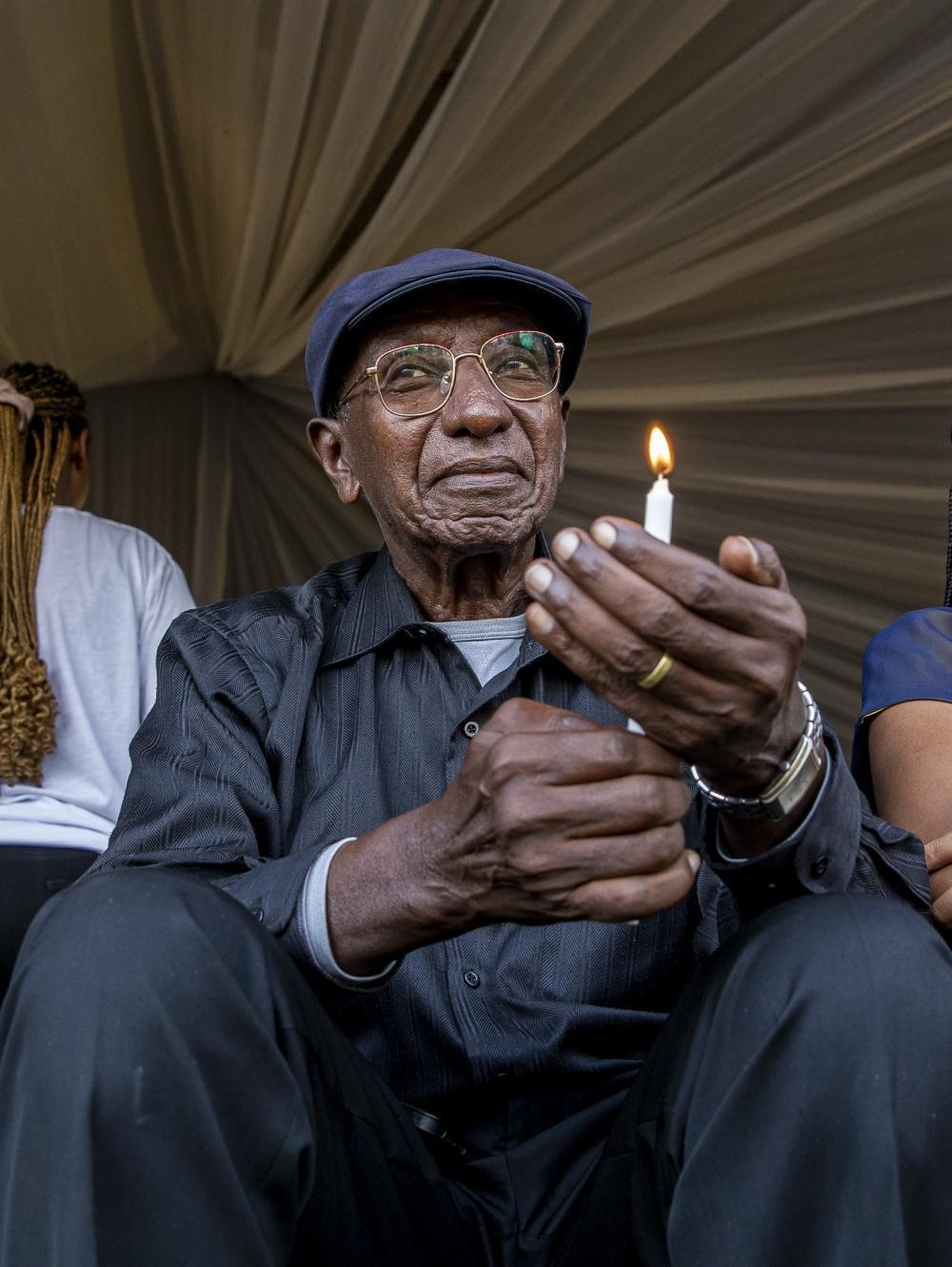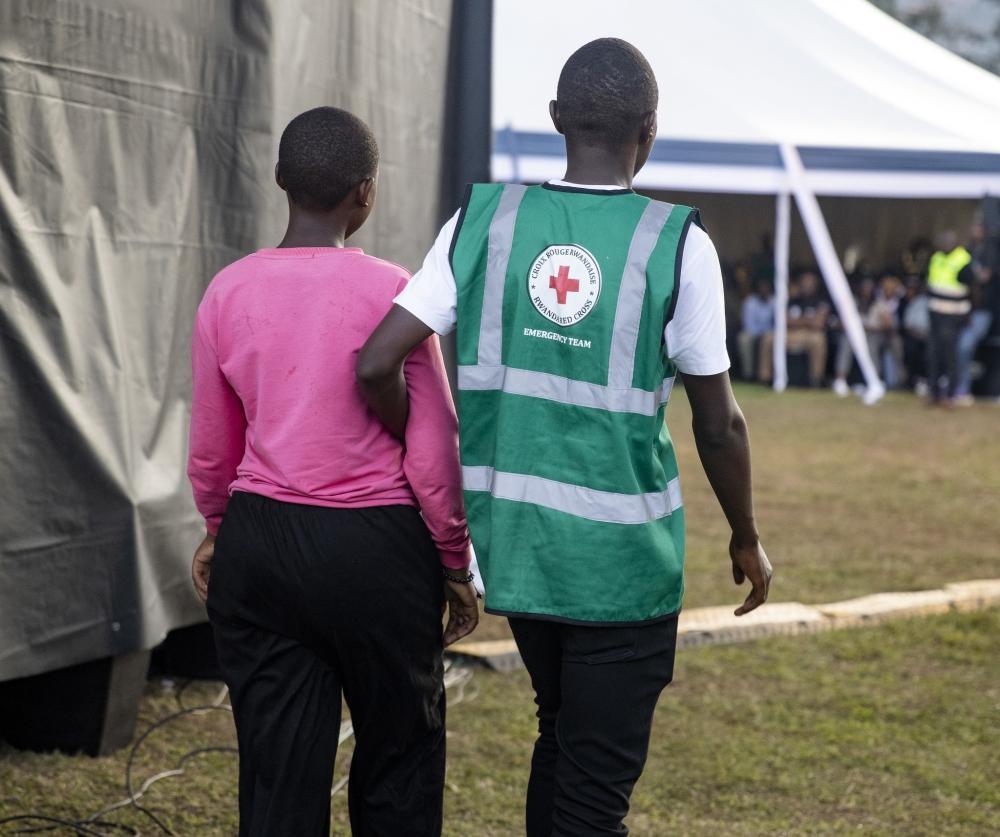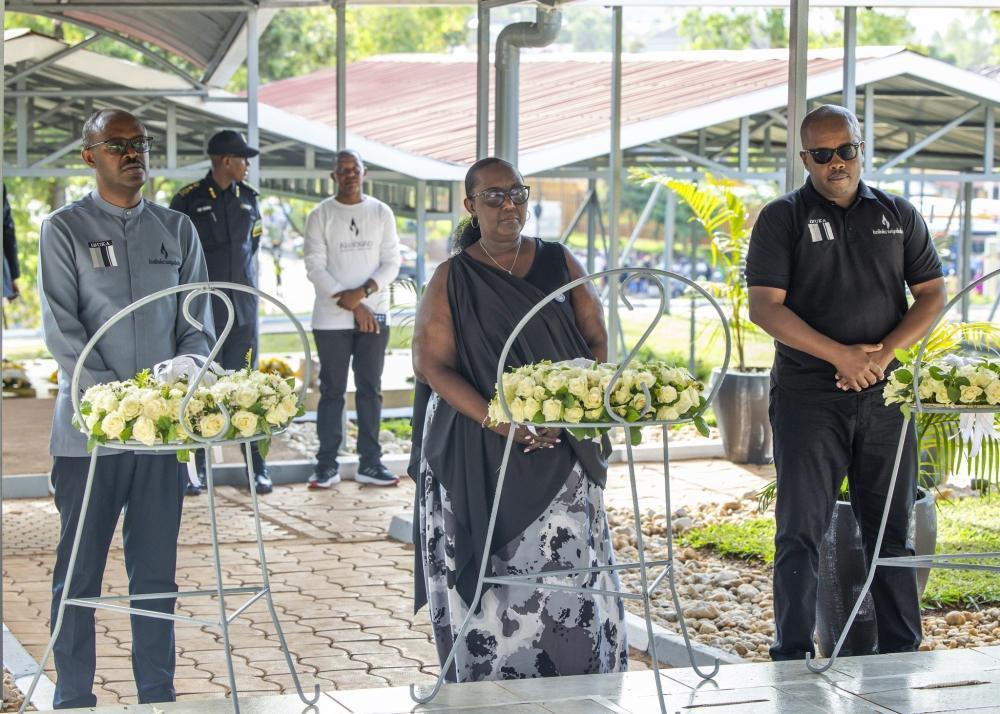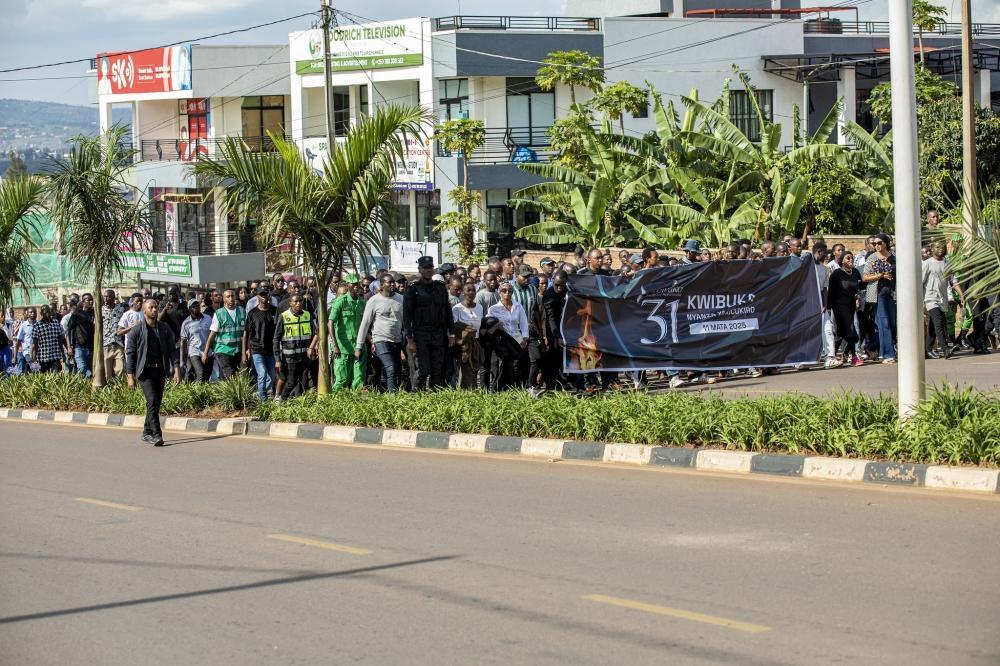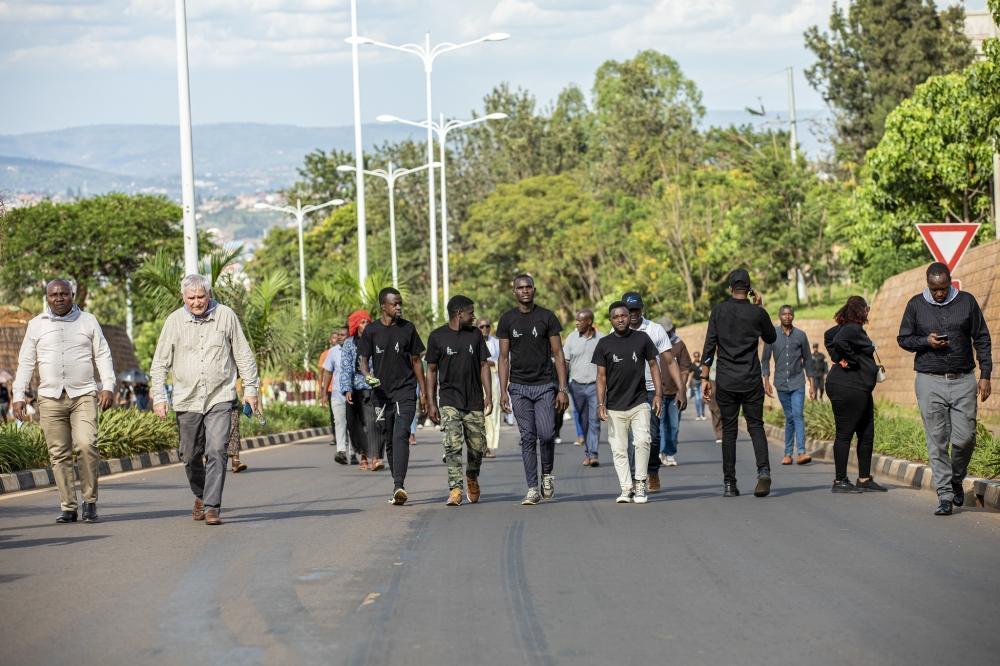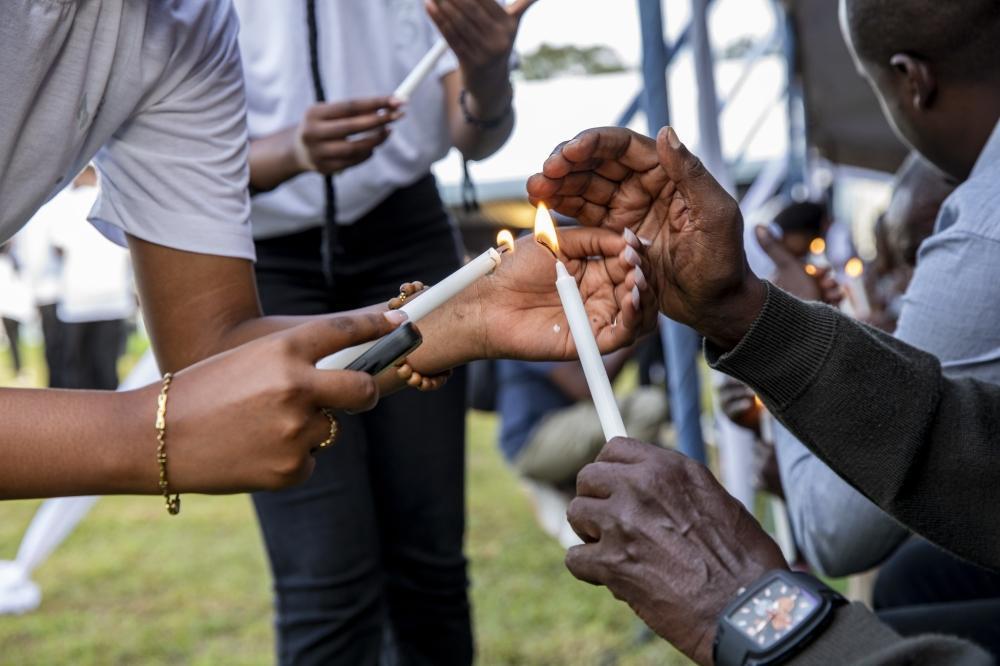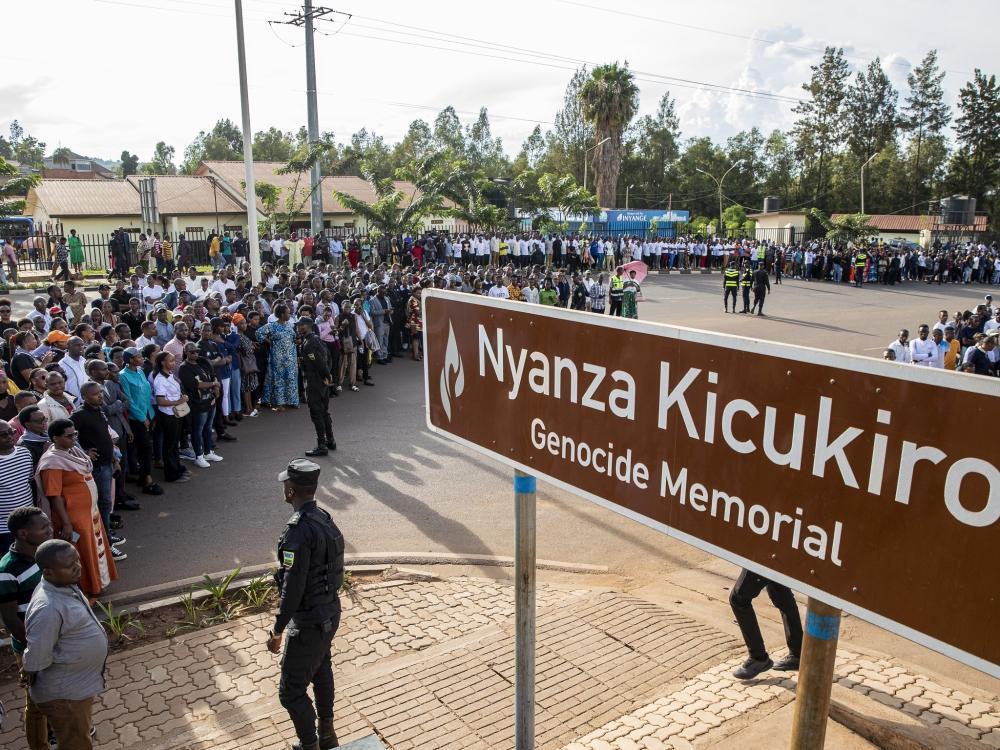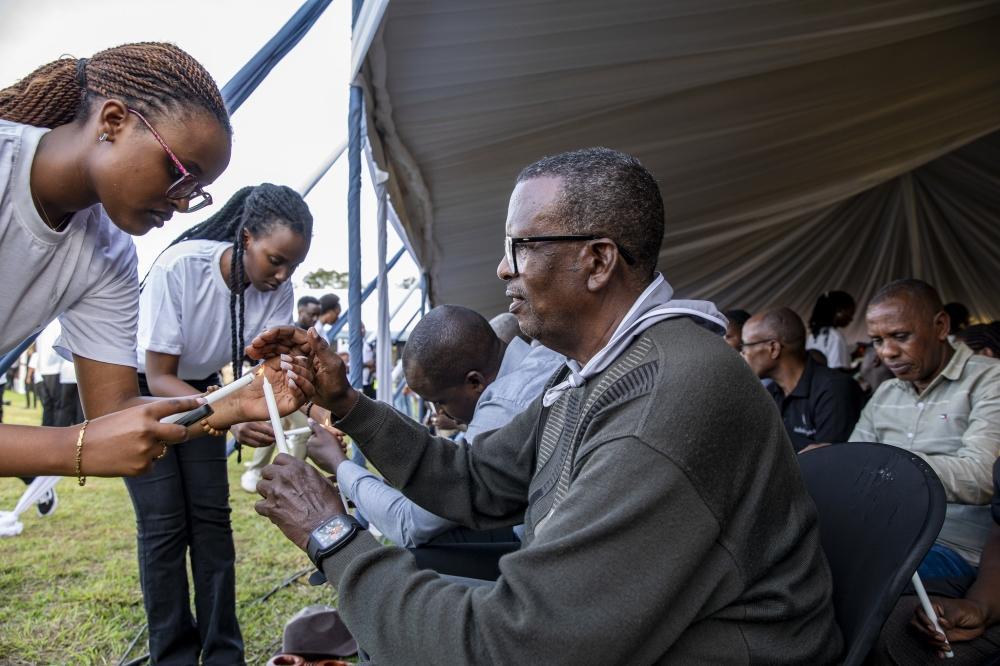Africa-Press – Rwanda. The Minister of National Unity and Civic Engagement, Jean-Damascène Bizimana, on April 11 delivered a sobering reminder of Belgium’s acts that enabled decades of anti-Tutsi violence, by even letting off the offenders. He was speaking at Nyanza Genocide Memorial during a commemoration event held to honour the victims of the 1994 Genocide against the Tutsi.
Bizimana delivered a presentation on the Genocide and lessons for Rwandans, regional countries, and the international community. He accused Belgium of fostering a culture of impunity, dating back to the early 1960s, which emboldened perpetrators and laid the groundwork for the Genocide.
From backing extremist political movements to releasing known killers through a controversial amnesty law, Belgium’s actions, he said, signalled to the world—and to Rwandans—that Tutsi lives could be taken without consequence.
Bizimana stated that some Belgians supported the Party of the Hutu Emancipation Movement’s (PARMEHUTU) violent campaigns, which involved killing the Tutsi and burning their homes.
He indicated that Belgian authorities even deployed helicopters to drop propaganda leaflets. The leaflets incited certain Hutu individuals who opposed the persecution of the Tutsi to distance themselves, emphasising that the real target was the Tutsi community. He added that Belgium later took actions which signalled to the perpetrators of violence against Tutsi that they would face no consequences.
On June 23, 1961, Bizimana said, Belgium passed a controversial amnesty law, releasing 2,000 individuals involved in the massacres between October 1, 1959 to April 1, 1961.
The law specified that those granted amnesty were individuals who killed or burned people alive in their homes; slowly tortured or seriously injured others; organised or ordered looting and murders.
After the publication of the law, he said, Belgian military officer Col Guillaume “Guy” Logiest, issued a communiqué specifying that those granted amnesty were individuals who committed crimes and other cruelties related to politics – meaning those who violated the law as a result of anger based on political reasons. Logiest served as Belgium’s top-ranking colonial official, the special military resident from 1959–1962 and High Representative (1962).
Information from the Ministry of Foreign Affairs and International Cooperation on a brief historical timeline of Belgium in Rwanda, indicates that, to establish PARMEHUTU in power, Belgium deployed Logiest to Rwanda with the status of Special Military Resident, and granted him full administrative powers.
Bizimana pointed out that Logiest indicated that one of the obvious examples of the heinous acts eligible for the amnesty was setting houses on fire in many parts of the country, which he said was done by one part of the population that was showing that it was on bad terms with the other for political reasons.
The legislation specified that three crimes were subject to amnesty, namely killing or burning people alive in their homes; slowly killing (torturing) or injuring a person; and ordering looting and murders, Bizimana said.
“This means that those who had orchestrated killings were set free,” he observed.
Bizimana explained that these actions were taken to ensure that those responsible for the 1959 and 1960 massacres could participate in the presidential and parliamentary elections, thereby bolstering the political power of PARMEHUTU.
He expressed disbelief over Belgium’s justifications for these decisions through Logiest, who claimed that the amnesty was expected to bring peace the country needed before the elections that had to make the country achieve independence.
“What kind of independence is that granted while releasing murderers who burnt people alive, organised and planned killings?” he questioned. “What peace could it possibly bring?”
Belgium’s decision to release individuals responsible for the atrocities was not an act of reconciliation but rather favouring political power over justice, he stated.
“That is an independence that would tell the murderers who were set free that they have been granted the authorisation to kill again without restriction,” he said, observing that figures like Grégoire Kayibanda and Dominique Mbonyumutwa, who were involved in the violence, later rose to power under Belgian influence.
Friday’s commemoration began with a Walk to Remember, which started at IPRC Kigali (former ETO Kicukiro) and ended at Nyanza Genocide Memorial, where more than 105,000 Tutsi are laid to rest — including over 2,000 who were brutally killed on Nyanza Hill.
The victims had sought refuge at ETO Kicukiro where was located the base of Belgian UN peacekeepers from the then United Nations Assistance Mission for Rwanda (UNAMIR).
But, despite their appeal for protection by the Belgian UN peacekeepers, the latter withdrew, leaving the Tutsi vulnerable to former Rwandan government soldiers (ex-FAR) and Interahamwe militiamen, who massacred them on April 11, 1994.
According to Bizimana, this act of abandonment is seen as a reflection of Belgium’s long-standing animosity towards the Tutsi.
The Minister of National Unity and Civic Engagement, Jean-Damascène Bizimana lights candles at Nyanza Genocide Memorial during a commemoration event held to honour the victims of the 1994 Genocide, on April 11
Mourners during a Walk to Remember during a commemoration event held to honour the victims of the 1994 Genocide against the Tutsi at Nyanza Genocide Memorial.
For More News And Analysis About Rwanda Follow Africa-Press

